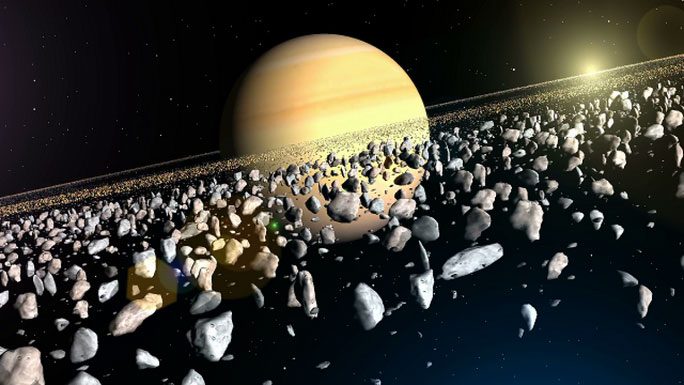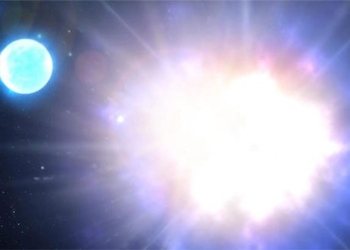One of the most puzzling structures in the Solar System may have originated from a collision between two icy moons orbiting Saturn.
A study recently published in the scientific journal The Astrophysical Journal suggests that in the “recent astronomical past”, two of Saturn’s moons collided, creating the distinctive rings around this planet.

The rings of Saturn are a dense field of debris – (Photo: UNIVERSE TODAY)
Dr. Jacob Kegerreis from NASA’s Ames Research Center humorously remarked, “It would be great to know if dinosaurs had telescopes good enough.”
This implies that the catastrophic collision of the aforementioned moons could have occurred during the age of dinosaurs, as previous calculations by NASA indicate that Saturn’s “young” ring system is only a few hundred million years old.
While this time frame may seem distant to humans, it is still considered “recent” in the context of astronomical history and the age of the planet – over 4.5 billion years.
According to the New York Times, the new research suggests that Saturn may have had more moons than the currently confirmed count of 145, some of which were destroyed by collisions.
With their moderate size, two icy moons could release a significant amount of cold material toward Saturn.
If that icy layer surpasses and maintains itself beyond the Roche limit – the boundary beyond which a planet’s tidal forces can disintegrate moons – it has the potential to transform into rings.
Other debris might have collided with different moons, causing the “victims” to break apart slightly, releasing additional material.
This material could fill the rings and may also coalesce to form new moons.
This could explain the youthfulness of Rhea, Saturn’s second-largest moon after Titan.

Rhea, Saturn’s moon, may also be the result of a collision between two moons hundreds of millions of years ago, triggering a cascade of collisions – (Photo: NASA)
Observations from NASA’s Cassini spacecraft show that Rhea has a circular and flat orbit. This evidence supports the idea that it was formed relatively recently, possibly from the debris of older moons.
This is also why scientists are searching for life on Titan or Enceladus – the “older” moons – rather than Rhea, despite its large size, as a world that is too “young” may not have had enough time for life-generating reactions to complete.





















































